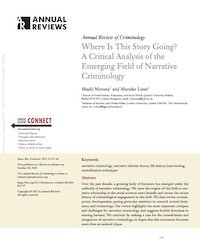By Caylin Louis Moore, and Forrest Stuart
For nearly a century, gang scholarship has remained foundational to criminological theory and method. Twenty-first-century scholarship continues to refine and, in some cases, supplant long-held axioms about gang formation, organization, and behavior. Recent advances can be traced to shifts in the empirical social reality and conditions within which gangs exist and act. We draw out this relationship—between the ontological and epistemological—by identifying key macrostructural shifts that have transformed gang composition and behavior and, in turn, forced scholars to revise dominant theoretical frameworks and analytical approaches. These shifts include large-scale economic transformations, the expansion of punitive state interventions, the proliferation of the Internet and social media, intensified globalization, and the increasing presence of women and LGBTQ individuals in gangs and gang research. By introducing historically unprecedented conditions and actors, these developments provide novel opportunities to reconsider previous analyses of gang structure, violence, and other related objects of inquiry.
Annu. Rev. Criminol. 2022. 5:299–320





















